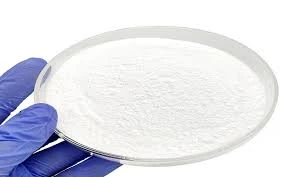What Does a Plasticiser Do?
Plasticisers play a crucial role in the production and functionality of various plastic materials, enhancing their performance and usability. As additives, plasticisers are employed to increase the flexibility, workability, and pliability of plastics, making them essential in various industries, including construction, automotive, and consumer goods. This article explores the function, types, and implications of plasticisers in the modern world.
Understanding Plasticisers
Plasticisers are substances added to polymers to reduce their brittleness and enhance their mechanical properties. They achieve this by embedding themselves between the polymer chains, increasing the distance and mobility among them. As a result, the material becomes softer, more flexible, and easier to handle. This is particularly vital in applications where flexibility and durability are necessary.
Types of Plasticisers
There are two primary types of plasticisers phthalate and non-phthalate plasticisers
.1. Phthalate Plasticisers These are the most common and have been widely used for decades, particularly in polyvinyl chloride (PVC) products. Common examples include di(2-ethylhexyl)phthalate (DEHP), dibutyl phthalate (DBP), and diethyl phthalate (DEP). Phthalates are effective in creating flexible and durable plastic products but have recently come under scrutiny due to potential health risks.
2. Non-Phthalate Plasticisers As awareness regarding the health implications of phthalates has grown, the industry has seen an increase in the use of non-phthalate plasticisers. Examples include dioctyl terephthalate (DOTP) and other bio-based or renewable options. These alternatives aim to provide the same benefits in terms of flexibility and performance while minimizing health risks.
Applications of Plasticisers
what does plasticiser do

Plasticisers find applications in a wide range of products, particularly in the manufacturing of flexible plastics. Some notable examples include
- Construction Materials Many building materials, including flooring, wall coverings, and roofing membranes, rely on plasticisers to achieve the desired flexibility and durability. These materials must withstand various environmental conditions, making plasticisers an integral component in their formulation.
- Consumer Goods Products such as vinyl upholstery, children's toys, and food packaging also benefit from the use of plasticisers. In these applications, plasticisers help in enhancing the feel, durability, and safety of the products, ensuring they meet consumer expectations.
- Automotive Industry In automobiles, plasticisers are used in various components, including dashboards, seat covers, and wiring insulation. Their ability to maintain flexibility and resist degradation under changing temperatures makes them essential for automotive applications.
Environmental and Health Considerations
While plasticisers are indispensable in many industries, concerns about their potential health and environmental impacts cannot be overlooked. Some phthalates have been linked to health issues, including hormonal disruptions and reproductive problems. As a result, regulatory bodies in many countries have imposed restrictions on specific phthalates, prompting manufacturers to explore safer alternatives.
The transition to non-phthalate plasticisers is a response to these concerns. These alternatives aim to provide similar plasticization properties without the associated health risks. Research and development in this area are ongoing, with a focus on creating sustainable and biodegradable options that meet industry standards while being environmentally friendly.
Conclusion
Plasticisers are vital additives that significantly improve the properties and performance of plastics across various applications. While phthalate plasticisers have been prevalent for many years, the industry's shift towards non-phthalate alternatives reflects a growing awareness of health and environmental concerns. As research continues, the future of plasticisers looks toward safer, sustainable innovations that will ensure the durability and flexibility of materials while prioritizing health and environmental safety. The careful selection and use of plasticisers will play a pivotal role in creating products that meet the demands of modern society while being mindful of our planet's well-being.

